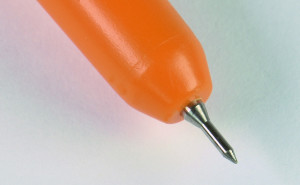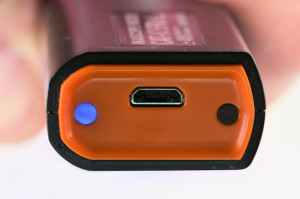Review: IkaScope WS200 wireless oscilloscope probe
Striking features

To start with, due to its construction the IkaScope has only one channel, compared to two with most other oscilloscopes. In addition, you always have to hold the pen on a test point with the tip pressed in – the measurement stops as soon as you release the pressure. That means it’s not possible to clip the IkaScope onto a test point. With some applications that can be very convenient, but with others definitely not.
The maximum sampling rate is 200 Msamples/s, which is fairly high. The input bandwidth is 30 to 50 MHz, depending on the input attenuator setting.
The input sensitivity range of the IkaScope is 100 mV/div to 10 V/div. That makes it difficult to properly measure very weak signals. The maximum input voltage is ±40 V, which is certainly enough for most measurements.
The IkaScope is galvanically isolated from the computer by the wireless link, and the USB power connector is also galvanically isolated from the other circuitry inside the pen.
Practical experience

USB connector for charging the built-in battery.
After working with the IkaScope for several weeks, I’m still not entirely used to it. On the one hand I find the design very clever, but on the other hand I don’t like the fact that you always have to hold the IkaScope pressed on a test point in order to monitor a signal. Particularly when working on a prototype circuit, you want to have your hands free to make some changes to the software or adjust a signal generator. However, I imagine that this little device could be very handy in field service when you have to make a few quick measurements somewhere.
Conclusion: The IkaScope is a unique, innovative device, but it has some downsides due to its design. In my view it is not suitable for making extensive measurements in the lab, due to its unusual mode of operation. Service technicians and electronics enthusiasts on the go who do not want to take along a lot of equipment will certainly like it. However, that convenience comes at a price.
Read full article
Hide full article


Discussion (0 comments)